As the number of email users is expected to reach 4.6 billion by 2025 – or around 376 billion daily emails – you might feel like you are not drawing enough email subscribers from the ever-growing userbase. And rightfully so: with an impressive 13.3% CAGR, growing your email marketing revenues by anything less than 13.3% means lagging behind.
But may the thirst for the quick buck not mislead you: sending batch-and-blast unsolicited emails is the worst email marketing strategy ever! Even a decade ago, email marketing professionals respected the customer’s right to choose whether to receive emails through a double (13%) or single opt-in (64%).
Improve your email deliverability with these 15 tools.
In 2023 it’s obvious you can’t throw unsolicited content at strangers and hope for a magic connection. More and more companies leverage customer-centric email campaign strategies like onboarding (66.67%), lead nurture (60.61%), surveys (51.52%), and feedback (48.48%), with only 37.88% of brands relying on cold emails.
- There’s absolutely no doubt in the necessity to ask a customer whether they want to receive your emails before bombarding them with your content – but a much more subtle question is how exactly to ask them.
Below are the most effective email marketing strategies to encourage customers into your email net while staying on the legal side of things and looking trustful in the eyes of your subscribers – the number one brand quality for 60% of customers.
Before Everything Else, Create Valuable Content
No matter the brilliance of your email subject lines, design, and CTAs, what really matters at the end of the day is the quality of your content. We won’t elaborate on how to create and connect your values to content, but it does seem important to remind that you can’t mask the absence of a value proposition behind a spectacular wrapping.
Now that you’ve been warned, let’s make it to the most reliable opt-in email marketing strategies you can use in your email campaign planning in 2023 and beyond.
Gated Content
One opt-in email marketing strategy that lies on the surface is exchanging value for consent to receive emails. Now, whenever value exchange is concerned, gated content is just on the next level, growing conversions like nothing else. According to Monster Insights, gated content can multiply conversions by up to 3,800%, pre-qualifying every second visitor.
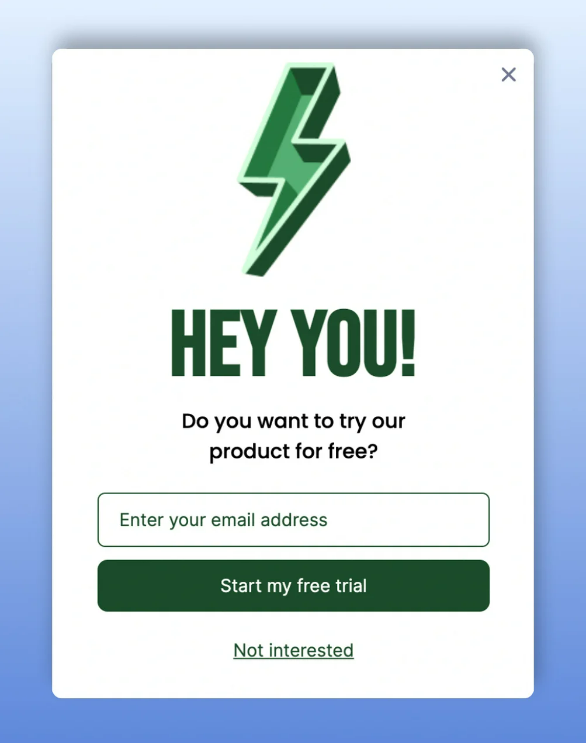
Source: Popupsmart
What content should you gate? Content that is valuable enough for a client to opt in: articles, e-books, research papers, demos, and free access to paid products. The game’s name, however, is not to give away more than you can gain, so make sure not to overkill.
In my previous article, I used HubSpot’s free email calendar template, for which they requested an email address and some work details. I shared everything needed to get the sought-after spreadsheet. And why not? People are eager to exchange value with trustful parties.
Here I am – one tick away from becoming a Hubspot subscriber:
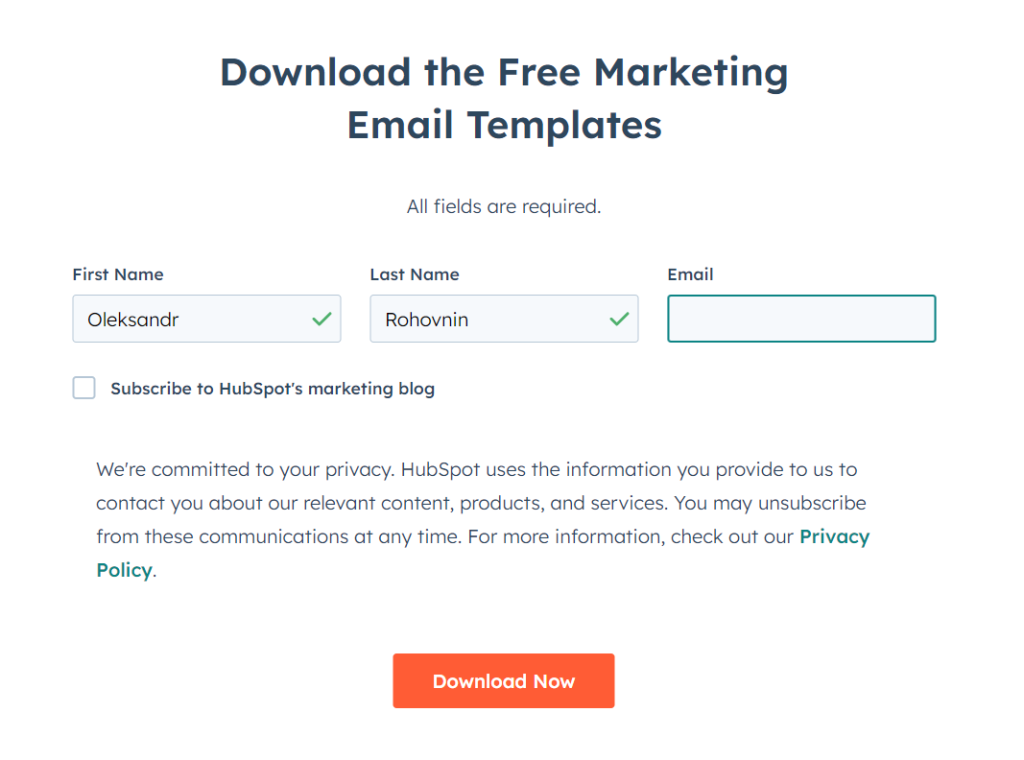
Source: HubSpot
Master responsive email templates for effective outreach.
That said, as powerful as this email content strategy can be, you should be selective with what you gate. Time-sensitive, generic, and descriptive content typically doesn’t work well. In general, though, the more value you provide and the less you ask in return, the more people subscribe.
Double Opt-In
Do you know what works better than a single opt-in? You’re right – a double opt-in, ensuring the subscriber wants to receive your emails. Albeit this email marketing strategy may seem a bit excessive – no one likes being asked the same question twice – it does work for creating a high-intent subscriber list.
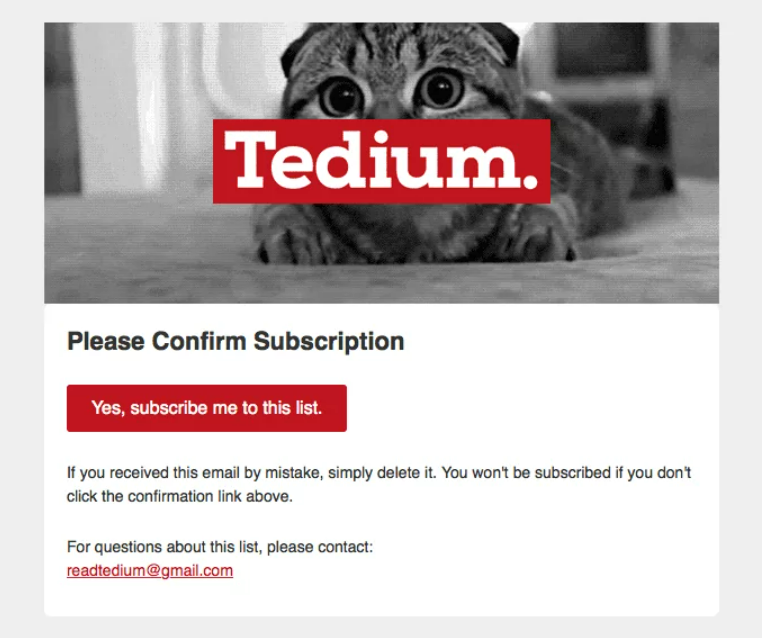
Source: Automizy
Here’s how a double opt-in email marketing strategy works:
- A user fills out the first opt-in for
- You request them to confirm their subscription in an email letter
- Those willing to join your email list confirm they want to subscribe
Double opt-in is a double-edged sword, though. See the table below.
Double Opt-In Pros and Cons
| Pros | Cons |
|---|---|
| Higher email list quality | Slower email list growth |
| Lower complaints rate | Increased subscription complexity |
| Protection against fake sign-ups | The confirmation letter can end up in the spam folder |
| Extra legal protection layer | Loss of impulse subscribers |
| Improved analytics | Potential frustration |
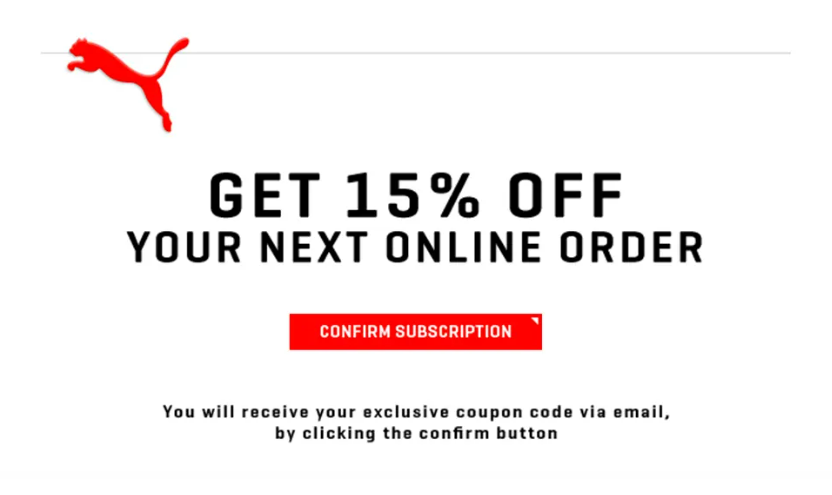
Source: Ecomsutra
Long story short, enabling double opt-in is all about calculating whether a loss in impulse purchases will pay off as the quality of your subscribers grows. In some cases, though, double opt-in is the only viable email marketing strategy within your legal landscape.
Set the Right Expectations
With newsletters and promotional campaigns being the two most popular email marketing strategies, it’s crucial to let your subscribers know what content they will receive. Besides, you can be creative and add some mouthwatering CTAs and witty wording.
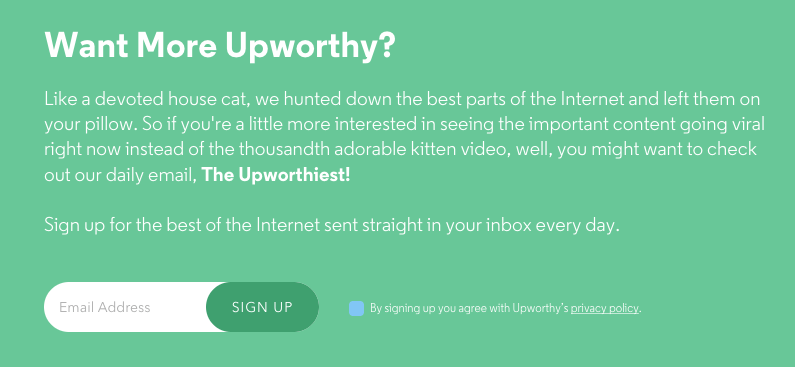
Source: ActiveCampaign
In the example below, Swipe Files capitalizes on creative wording (“sometimes crazy marketing ideas”) and social proof (“join 5,377+ prolific marketers” and a quote by Jason Resnik) while making it short and sweet, informing subscribers about the content they are going to receive.
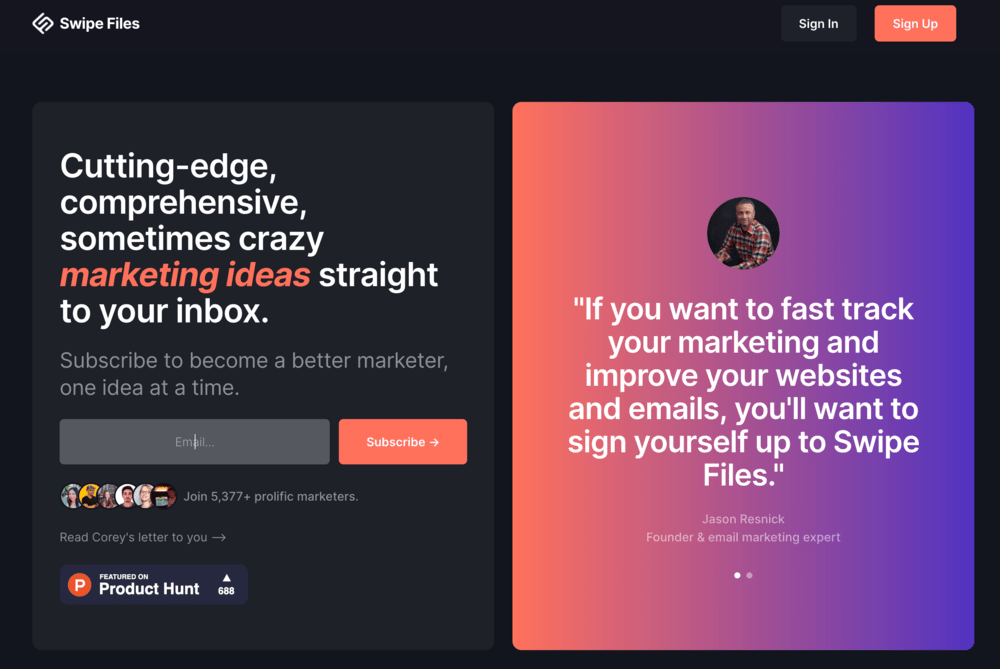
Source: Convertflow
Let Them Choose
Hitting the right customer with the right message is extremely complex, but not if your subscribers choose their preferences in the first place. People subscribe to emails for various reasons, but it’s up to you to ensure they only receive content they truly need and want.
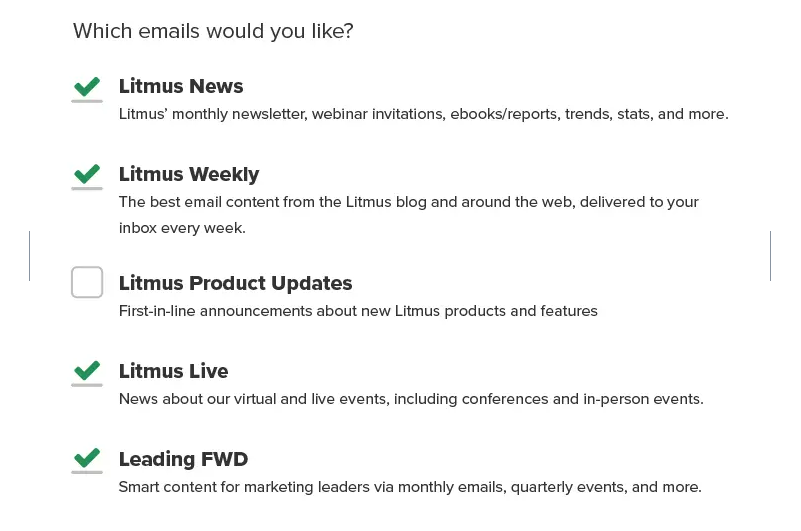 Source: Litmus
Source: Litmus
You can even offer them a print subscription. This will solve two goals: first, those willing to receive paid print materials will get them; second, your free online subscription will look advantageous alongside a paid print option.
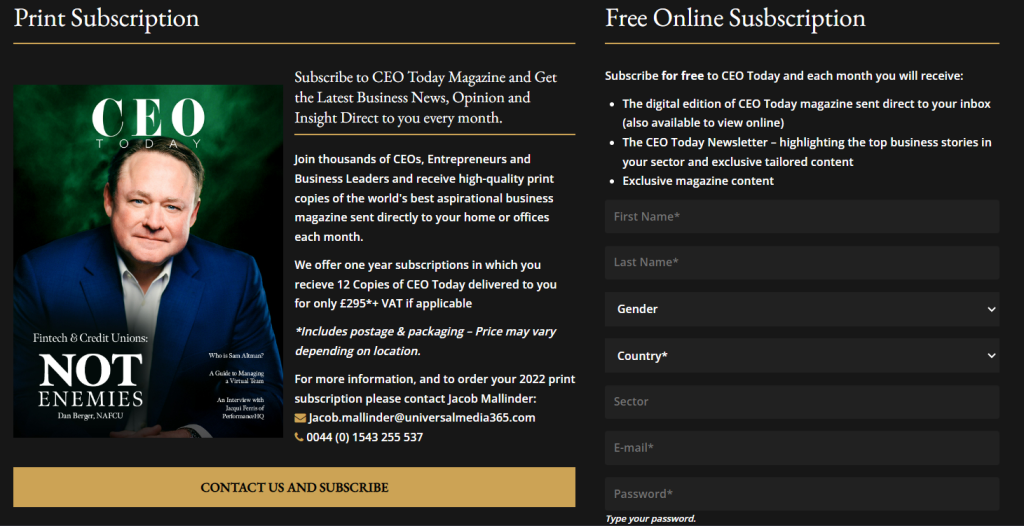
Source: CEO Today
Keep It Simple
Down with advanced opt-in email marketing strategies – you can make it dead simple and still win!

Source: GIPHY
The KISS principle has proven effective across many business avenues, from design to marketing to sales, calling to simplify any system for better results. Look at the example below – hardcore KISS followers may even claim the “How did you hear from us” field redundant.
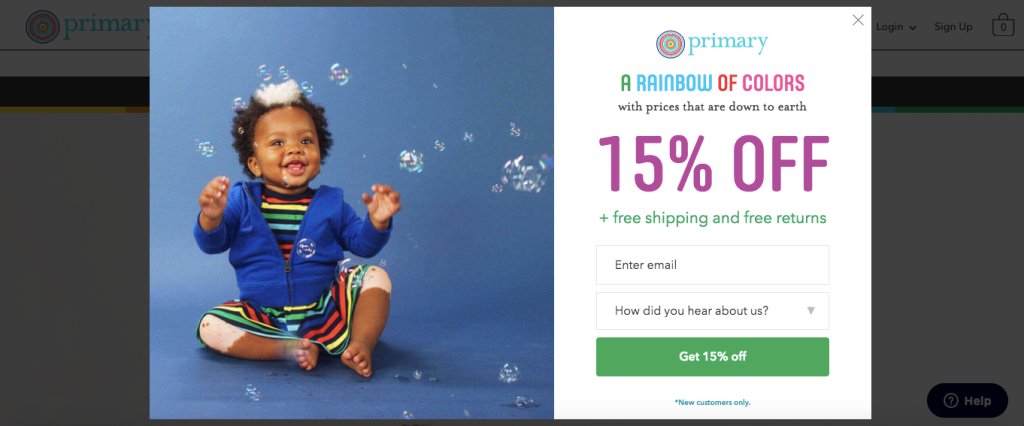 Source: Drip
Source: Drip
Be Creative With the CTA Button
Besides the conventional op-tin email marketing strategies, you can leverage your creativity to strike a chord with your potential subscribers. For example, you can change the standard “Subscribe Now” button to a catchy phrase that reflects your content, ideas, and values.
One of the best opt-in email marketing strategies is personalizing your CTA button depending on the user profile, location, browsing history, and more factors. You can even customize the content of the subscribe form AND the CTA button to convert up to 42% more users.
Learn more about how email personalization can grow your email list.
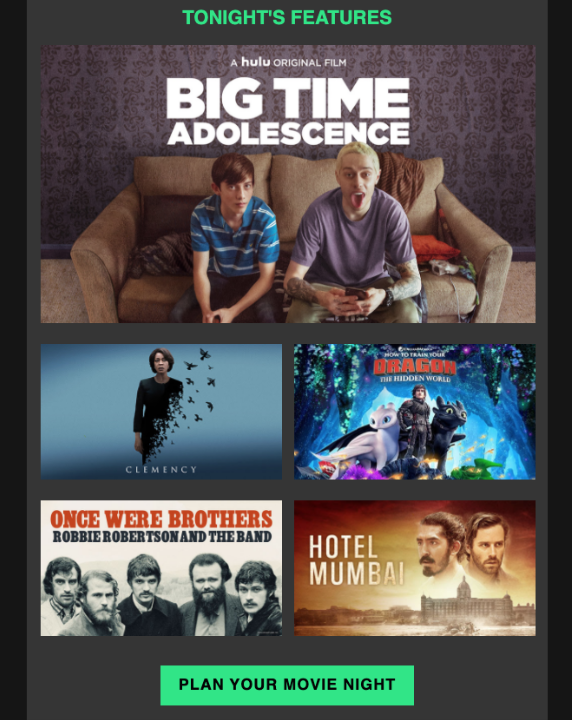
Source: Klientboost
“Attack” Potential Subscribers From Different Angles
From pop-ups to embedded forms to landing pages, there are quite a few ways to locate and display your email sign-up offer. One thing is sure, though: you should try several display options to understand which of them fly and which are a waste of effort.
1. Pop-Ups
With noticeable conversion potential – from 5% to around 8% depending on the execution – pop-up sign-up offers hit the right user at the right time, usually after a specific on-site action. However, pop-ups are annoying, leading to an increase in the bounce rate.
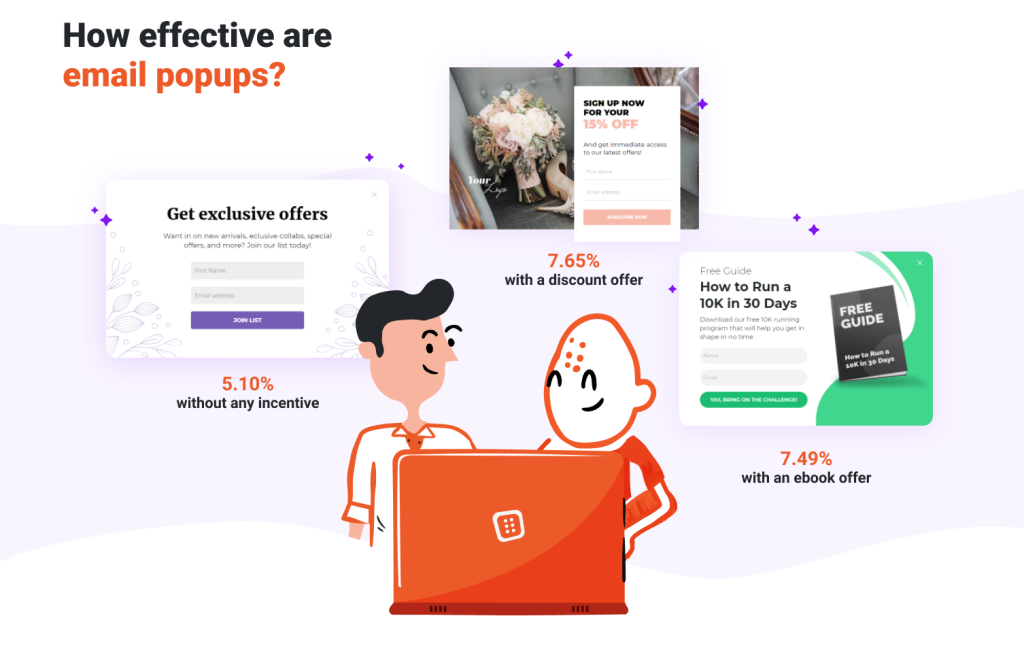
Source: OptiMonk
But then again, pop-ups allow you to quickly grow your email list at the risk of annoying a fair share of potential customers. By the way, mobile pop-up banners, including email sign-up forms, perform around 40% better than their desktop analogs.
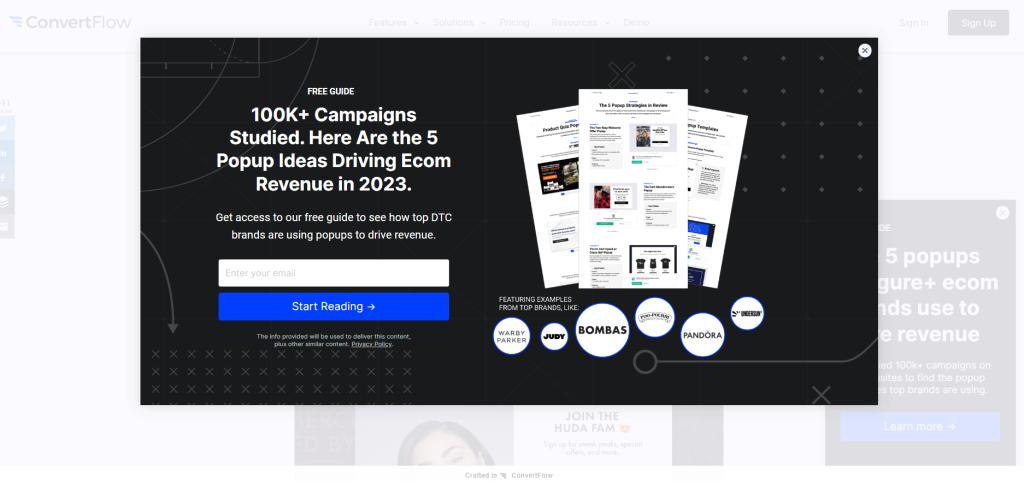
2. Landing Pages
Driving potential subscribers to a dedicated email sign-up landing page is a profound email marketing strategy…and a do-or-die one. Upon landing, they have only two options: sign up or leave. For you, though, this email strategy significantly simplifies analytics, retuning crystal-clear conversion and bounce rates.
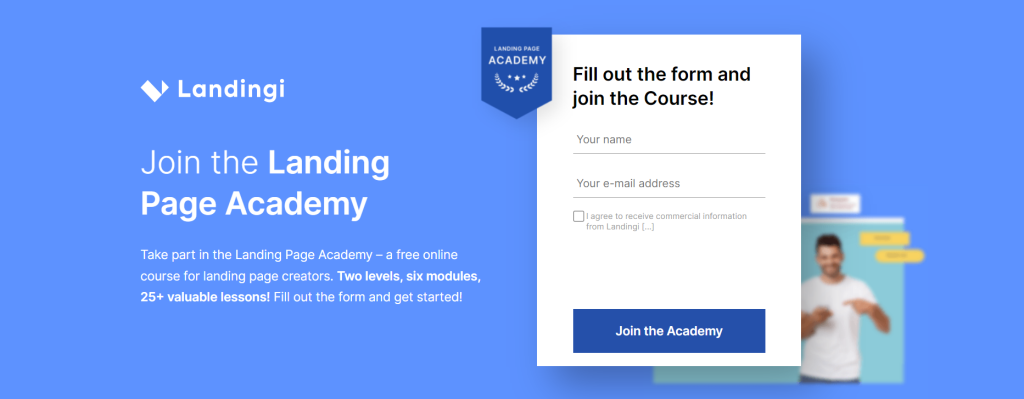 Source: Landingi
Source: Landingi
Landing pages bear the highest conversion rate among all sign-up forms, converting up to 23% of visitors, with 67% of marketers achieving a conversion rate higher than 10%.
3. Embedded Forms
Embedded forms have a great advantage: they constantly draw attention while not causing any annoyance. Depending on the website layout and campaign goals, you can locate inline forms at the top, bottom, or sides of the screen so that they get due attention.
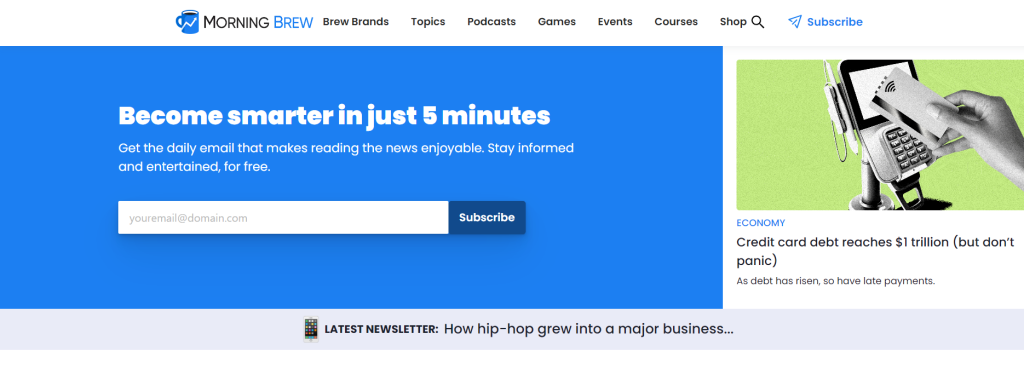
Source: Morning Brew
Appeal to the Customer’s Psyche
There’s no secret that the human psyche is ridden with cognitive biases of all sorts. For example, 69% of people are more concerned about the accuracy of other people’s information than the information they consume themselves.
The same applies to your email marketing strategy. Your sign-up form is the breeding ground for biases of all forms – you just need to capitalize on them while not being too harsh on your future subscribers.

Source: GIPHY
Here are the main psychological tricks to avail of in your email design:
- Fear of missing out (FOMO)
- Reciprocity
- Social proof
- Loss aversion
FOMO
Widely known since the 2017-2018 cryptocurrency boom, FOMO is the anxiety we feel when we believe we are missing out on a beautiful opportunity, especially one the others have already availed of. It’s hard not to fall prey to FOMO because it always hits us at the right time, triggering impulse purchases that alleviate our inner state.
- Around 60% of people make reactive purchases to escape FOMO, with the most common FOMO-induced feelings being envy (39%), jealousy (30%), and sadness and disappointment (21%).
The epitome of FOMO is a countdown timer, increasing your click-through rates by up to 30%. The coupons below are a good example of leveraging FOMO in your opt-in email marketing strategy.

Source: Shein
Reciprocity
How often do you feel an urgent need to return a favor when one is received? What you feel is called reciprocity, a deeply rooted human instinct that forces us to give back, including making impulse purchases, just not to feel indebted.
To evoke reciprocity within your opt-in email marketing strategy, you must do two things:
- Offer something valuable to a user before asking to subscribe
- Locate your sign-up banner in the right place or make it appear at the right time
Offering value upfront is one of the best email marketing strategies, as you are in full control of your offer and thus are always in an advantageous position (for example, you can offer them to subscribe during a checkout). Moreover, reciprocity is universal across demographics and cultures, resonating with every customer without exception.
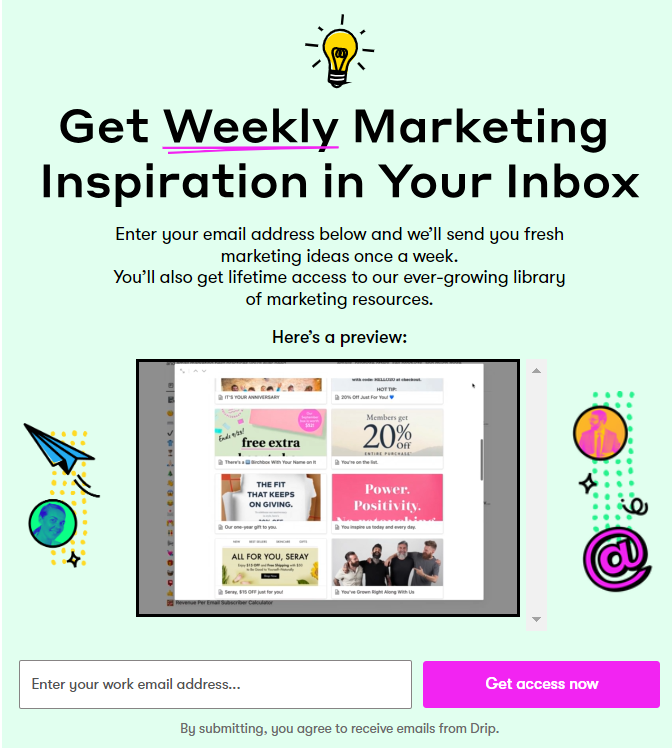
Source: Drip
Social Proof
Do you think other people’s opinions affect your own judgment? According to science, they do, and quite dramatically. Around 75% of customers search for reviews before buying something, expecting to see at least three to five reviews.
- Social proof is an extremely effective email marketing strategy for hesitating customers, as it makes them believe a choice made by hundreds and thousands of other people can’t be wrong.
Take, for example, Basecamp; they don’t just offer you to subscribe to a newsletter but join 150,000 of your peers who couldn’t subscribe for anything, could they? On par with the subscription option, the company offers you a sneak peek into their latest newsletter so you can check their content beforehand.
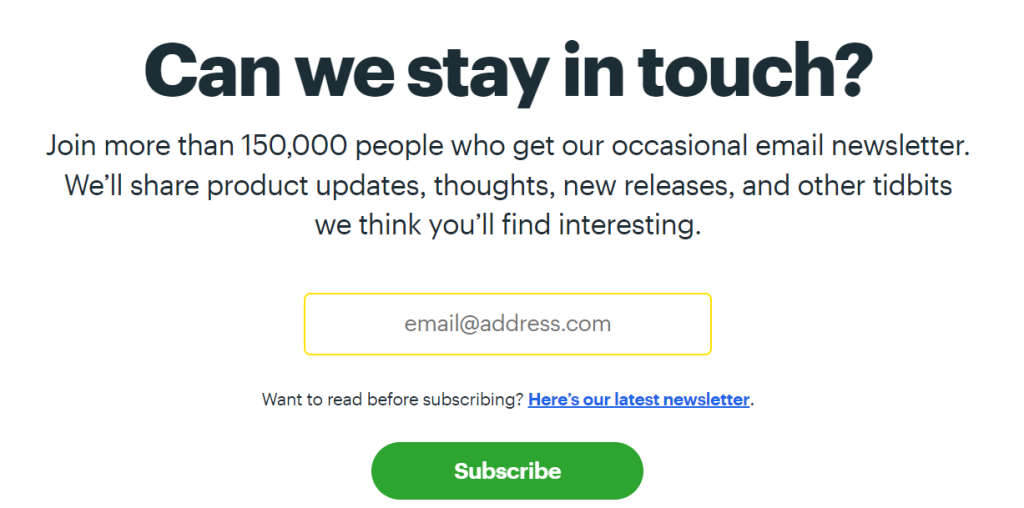
Source: Basecamp
Loss Aversion
Loss aversion is when we fear losing what we already have – or what we feel like having – more than gaining something of exactly the same value.
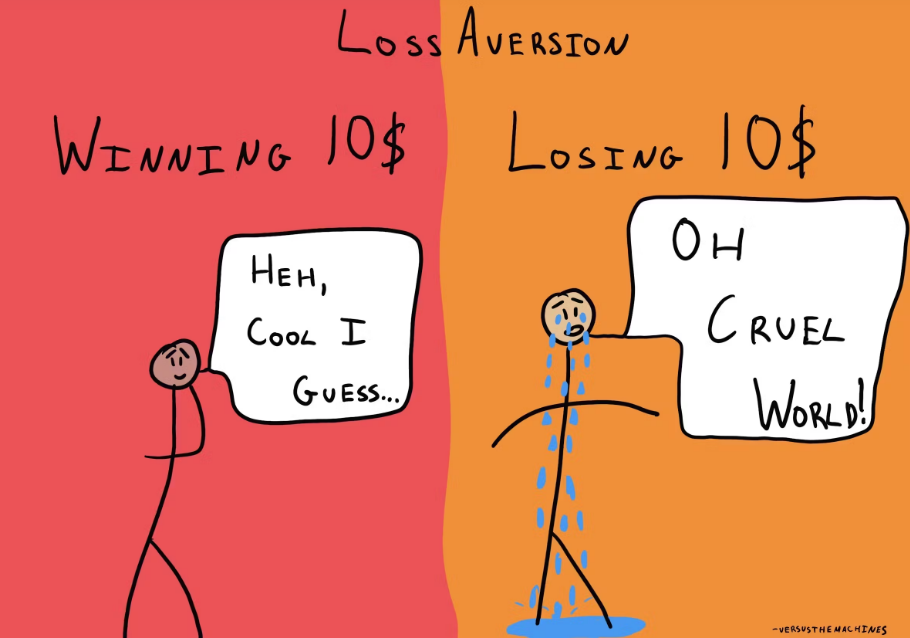
Source: The Decision Lab
To capitalize on loss aversion, you can offer a freemium, unlock paid features of your product, or set an expiration counter. More often than not, you can use loss aversion together with FOMO and other cognitive biases.
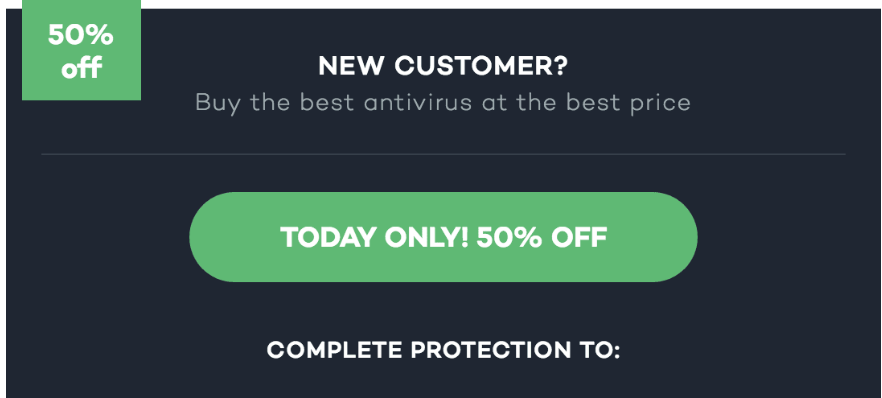
Source: Venture Harbour
Here’s a PDF to explore the nature of loss aversion in detail.
Last but not least,
Always stay true to your promises to lay a foundation of trust with your subscribers.

Source: GIPHY
May your email list grow exponentially with the help of the MailCon Community!
Speaking of which,
Join Phonexa’s FREE webinar at 11 A.M. PST on August 24
Within 45 minutes of action, you will learn to (among other things):
- Future-proof your email marketing measurement against the long-promised cookie phase-out
- Unlock customer insights by uniting data from your marketing stack and cloud infrastructure
- Personalize customer experiences at scale
The show will be hosted by Talar Malakian, the Chief Marketing Officer of Phonexa, starring Michael Jeter, the Director for Google Cloud Enterprise. Follow this link to register.
Frequently Asked Questions
What are the best email marketing practices for growing an email list?
Among email marketing best practices for growing your email list are creating gated content, setting the right expectations, keeping it simple, and using various triggers like FOMO or loss aversion. That said, the centerpiece of any email marketing strategy should be your unique value proposition, something that can give you an edge over your competitors.
What is the difference between email marketing strategies and tactics?
Email marketing strategies and tactics are usually used interchangeably in email marketing, with the difference being that strategic email marketing is the high-level plan regarding your business goals, target audience, value proposition, branding, and KPIs for your email marketing as a whole or specific email campaign. On the other hand, email marketing tactics include tools and actions to carry out within a specific email campaign, such as email design, personalization, CTA buttons, and more.
What is the new best email marketing strategy?
Arguably the best fresh email marketing campaign strategy to include in your email campaign plan is using AMP emails. Unlike regular emails, AMP emails do not necessarily redirect users to your website but enable purchases (and other target actions) directly from the body of your email letter while updating the email content (for example, the number of items left in the shop) upon every email open. With the shortest path to the purchase, AMP emails can take your marketing campaigns to the next level.









